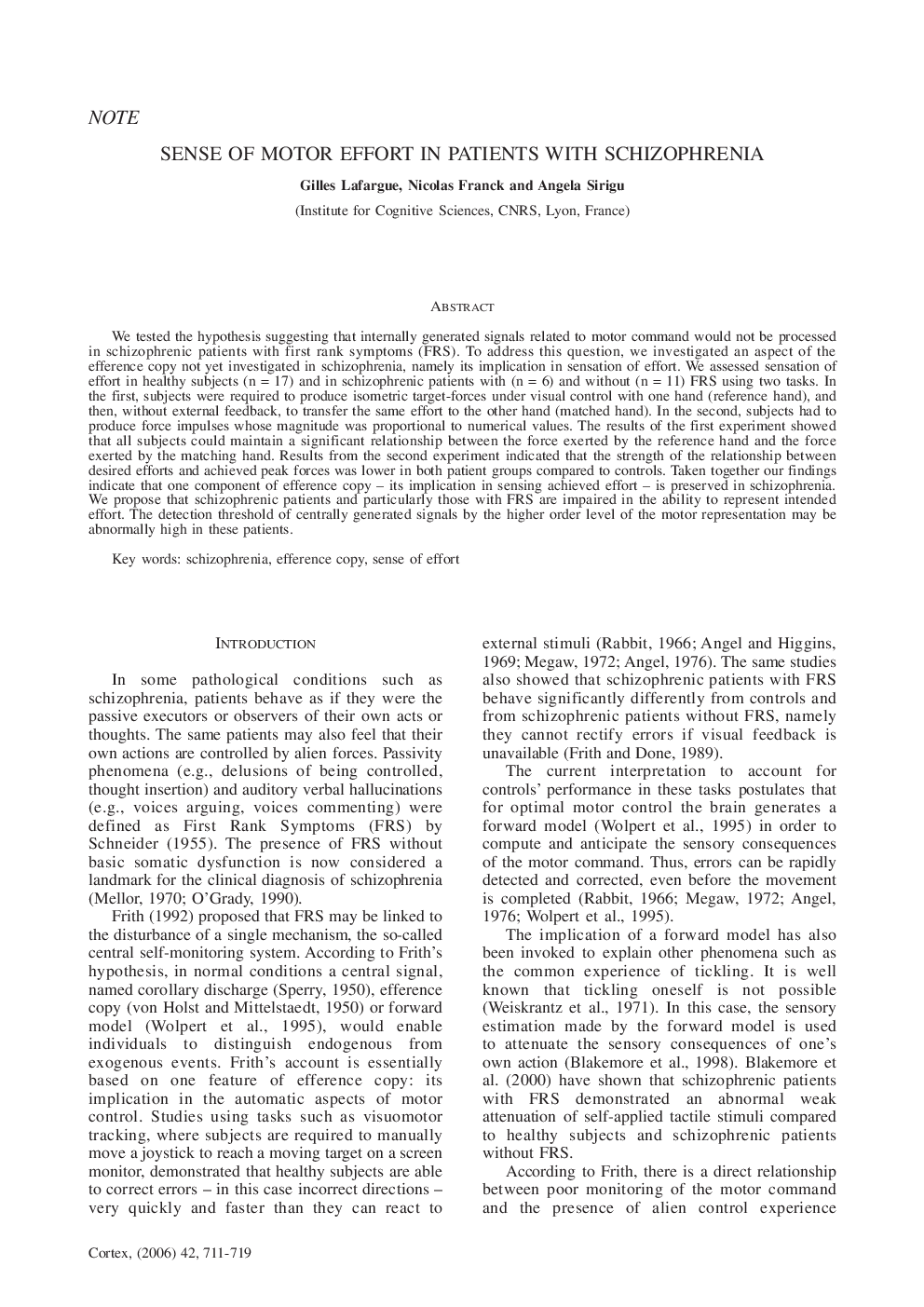| Article ID | Journal | Published Year | Pages | File Type |
|---|---|---|---|---|
| 942750 | Cortex | 2006 | 9 Pages |
We tested the hypothesis suggesting that internally generated signals related to motor command would not be processed in schizophrenic patients with first rank symptoms (FRS). To address this question, we investigated an aspect of the efference copy not yet investigated in schizophrenia, namely its implication in sensation of effort. We assessed sensation of effort in healthy subjects (n = 17) and in schizophrenic patients with (n = 6) and without (n = 11) FRS using two tasks. In the first, subjects were required to produce isometric target-forces under visual control with one hand (reference hand), and then, without external feedback, to transfer the same effort to the other hand (matched hand). In the second, subjects had to produce force impulses whose magnitude was proportional to numerical values. The results of the first experiment showed that all subjects could maintain a significant relationship between the force exerted by the reference hand and the force exerted by the matching hand. Results from the second experiment indicated that the strength of the relationship between desired efforts and achieved peak forces was lower in both patient groups compared to controls. Taken together our findings indicate that one component of efference copy — its implication in sensing achieved effort — is preserved in schizophrenia. We propose that schizophrenic patients and particularly those with FRS are impaired in the ability to represent intended effort. The detection threshold of centrally generated signals by the higher order level of the motor representation may be abnormally high in these patients.
